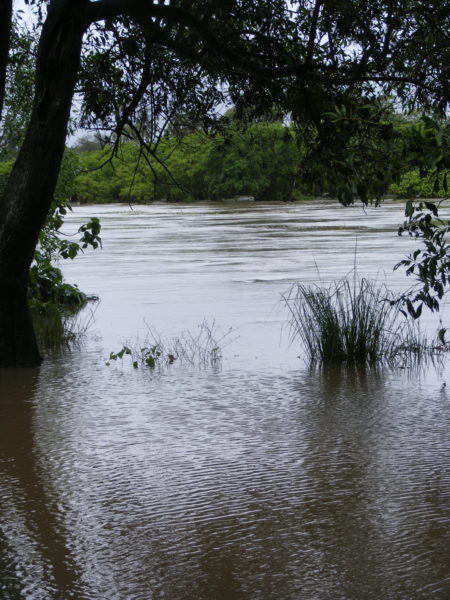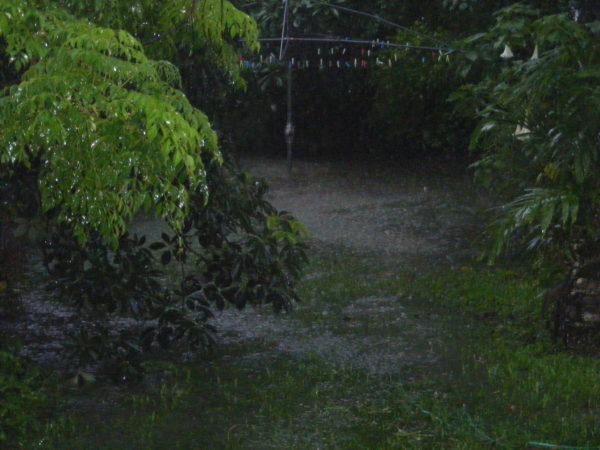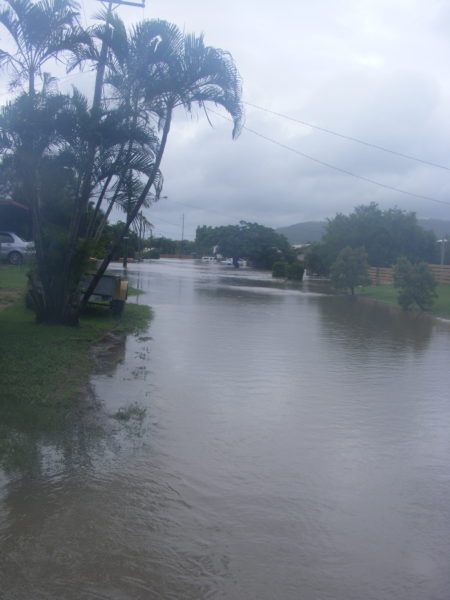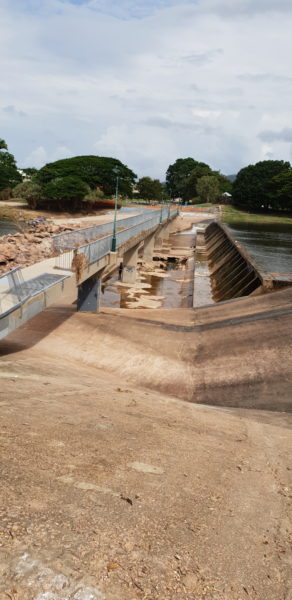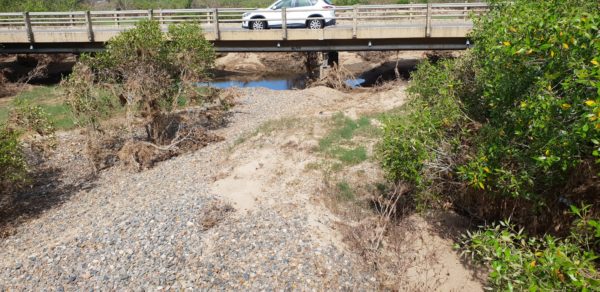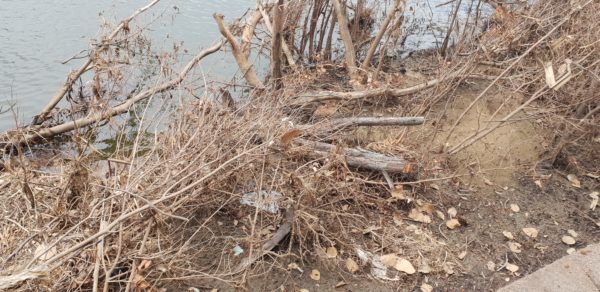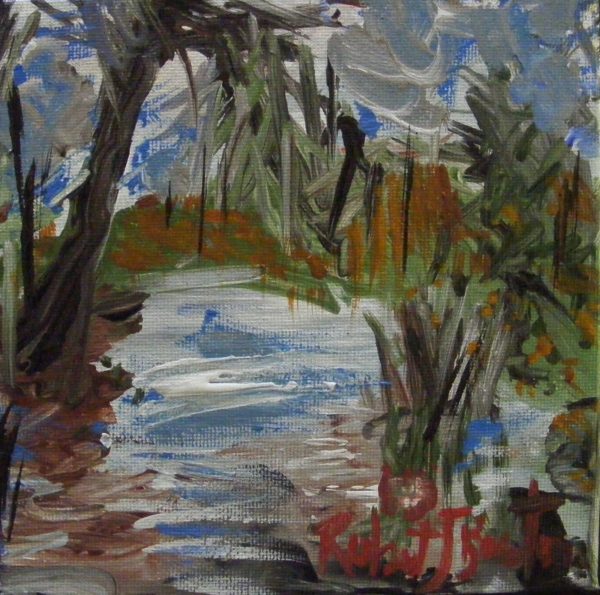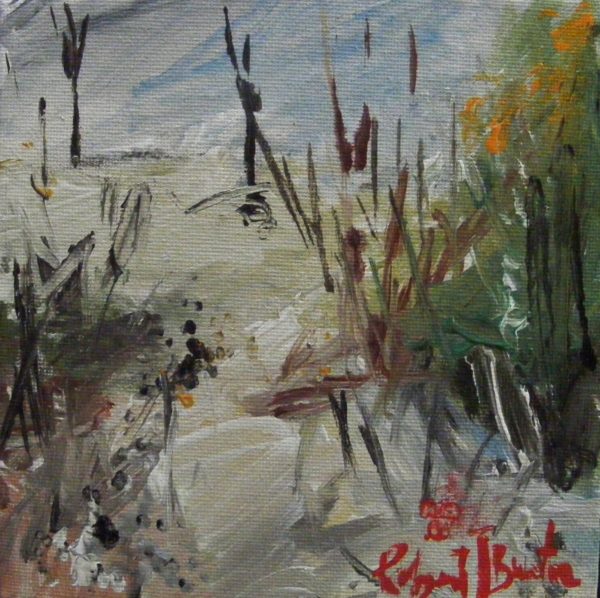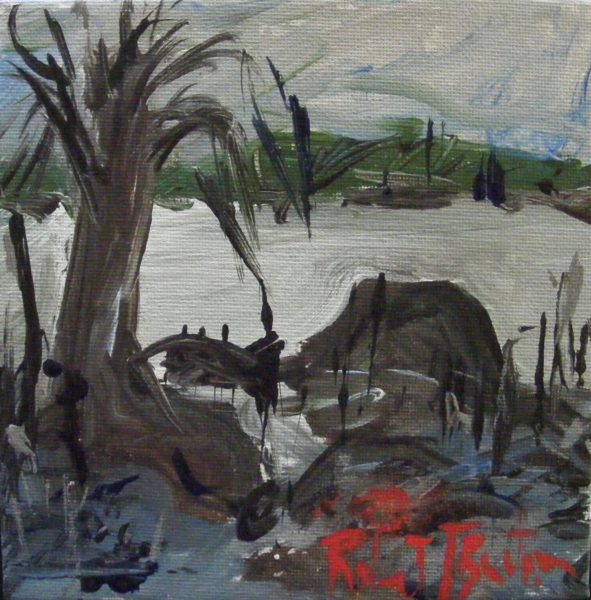The Townsville Flood of 2019
The Night of Fright
I have endured a couple of floods in my time around Queensland. The 1974 Brisbane flood destroyed everything I owned. The recent Townsville flood came very close and I wanted to write about the personal impact of such a natural disaster. So, the comments here are from my point of view only. Of course, as a longtime resident of Queensland I have gotten some extreme experience of droughts, floods, bushfires, and cyclones; surviving these events reminds one of the transient design of human living. When this big wet hit many residents and visitors appeared to be caught unprepared by the scale and speed at which the flood occurred. Many others did not want to believe that the extent of the flood would eventuate; humans unlike ants do not have another sense of impending drenching. Busy Black Ants were laying trails around my house as they do warn of imminent heavy rain. The impact of this flood is major, not only for Townsville City but for thousands of kilometres outwards. The aerial images of half a million plus drowned animals spread over the huge flood plain is gut-wrenching. Then there were six human deaths from drownings and flood-borne disease.
Flooding impacted large areas of Townsville from Wednesday, the thirtieth of January 2019, as a consequence of heavy rainfall across the north of Queensland. The flooding came quickly, and mostly on Sunday night, the third of February, with the initial rainfall causing around a small dog’s height of flooding in the worst affected areas. This subsided a little before more rain fell in the catchment which is basically Townsville itself. Then, the council under the Mayorship of Councillor Jenny Hill directed the release of water from the Ross River Dam, which led to flood depths of up to a standing adult over ground floor height. The dam had reached an amazing two hundred-forty percent plus capacity. Sunday evening just after 8.30pm, the electricity was cut to my suburb, very close to the Ross River. Next morning, we had an army armoured-tracked-personal carrier rumbling through flood water in front of the house. According to the Townsville City website, almost 3300 properties were damaged, thousands were asked to evacuate and there were widespread blackouts as houses and electricity relay stations were inundated. However, those figures are being constantly revised as it did not include the type of damage that ruined people’s garages, backyard sheds, fences, garden structures, and water seepage from old rooves which impaired electrical wiring. My own observations suggest that a quarter of all the houses, businesses, and public infrastructure locally was damaged from minor to quite severe. The number of places varies from different data sources; however, it will be a considerable financial cost, certainly well over a billion dollars. The long-term psychological cost is measured by the talk one hears as stories are told and retold in supermarkets, shops, and any place people wait. Street after street have been inundated around me in the suburbs of Oonoonba, Fairfield, Rosslea, and Annandale—all within walking distance. Many other flooded suburbs are out of my zone. The nearby Fairfield Shopping Complex was flooded, particularly those sections that had underground facilities, this included the big hardware store that had storage containers floating around the highway. We were fortunate to be in a small group of low-set houses that were on high enough ground to avoid the flood waters. Or we were fortunate that the flood stopped and receded when it did. I spent all of Sunday night in my lounge chair listening to a small battery powered radio kept for such occasions in my emergency pack. A gas barbecue on the back deck supplied us with hot water and cooked meals for the next two weeks while we were without electricity.
Mayor Jenny Hill has said data is showing the flood levels in the Ross River were greater than a one in five-hundred-year event. Although this information changes as more scientific evidence is gathered from hydrologists, reef scientists, and geologists. For example, the Mayor states some areas of the Ross River Dam catchment received rainfall totals that exceeded a one in a two-thousand-year rainfall event. These were the highest rainfall volumes on record for this area. This rain event was produced by the southern arm of a low-pressure trough that was centred over the Gulf of Carpentaria, drawing rain in from the Coral Sea. The low-pressure system was part of the monsoonal trough which occurs around this time of year. The placement of Townsville on an east-west aspect of the coast called Cleveland Bay means less rain than Cairns, because the trade winds are not lifted to produce rainfall right through the year. Surrounding Townsville are the Hervey Ranges which can block rain in or out depending on the prevailing winds, in the dry season around winter they act as a rain-shadow. However, Townsville does experience significant rainfall events when the conditions are right. The previous wettest day on record was the eleventh of January 1998, with five-hundred and fifty millimetres falling mostly at night, which has since been dubbed the Night of Noah by many of Townsville’s residents. Now, this present event has yet to hit the local lexicon with a similar evocative title describing this one-in-a-hundred, one-in-a-five-hundred, one-in-a-thousand year or bigger flood which has the penchant for the occasion. The best I have seen is Townsville in the Trough and my suggestion is the Night of Fright.
Though Townsville had just experienced an awful and very damaging event, one was left with a sense that the community was working. There was resilience with most in the community who seemed to be getting on with the job of cleaning up despite their future uncertainties through the recovery. I got the feeling some took the opportunity to dump their damaged households and leave Townsville for somewhere new, as I did after the 1974 Brisbane flood, and am considering now. Townsville’s climate is at times intolerable and people are in shock. The Army was on the streets, first rescuing people from flooded houses and flats using huge amphibious personal carriers, then trucking away the debris and damaged household goods that filled nature strips. Social services collected together and were offered in different places for flood victims to make claims for insurance or immediate benefits made available by the State and Federal governments through different services. Although this household survived the worst of the flood waters, we had electrical and water damage from old walls and the roof which cost two thousand dollars to repair. So, we were without power for two weeks which meant we lost all stored food, had no internet available, and found it tough to survive the humidity without air conditioning. I take chemotherapy for my skin cancer which has a multitude of side-effects including an inability to cool down easily and in any case ageing depletes this process. And the days after the flood were intensely hot and humid, with cruel skin-burning conditions; I got second-degree burns on my neck and forearms cleaning up the mess in the yard and sheds. There were damaged yard furniture and linings to sheds that had to be ripped out and dumped. I got some help for my sunburn and a small grant from the Queensland Department of Communities, Disability Services, and Seniors. Fortunately, Charlie the cat, slept through the whole terrible event and had the essentials of food and kitty litter. I had some Valium. The impending black mould hit every surface, flooded or within reach, and white vinegar became a basic. This commodity ran out quickly from the shops that were open and became a story in itself how extra vinegar was manufactured and sent to the devastated areas. Danger lay in the soil from sewerage contaminated overflows and several people have been infected by melioidosis, a soil-borne bacteria, resulting in two reported deaths.
I know many of my hand-built clay sculptures would have been destroyed in this flood as they have been in other weather events. I know because people either tell me, or I see ruined pieces around the place. Art suffers. One must let go, although I know for some that is difficult. I cannot help. The physical and social impacts would have been far greater had the floods been only a little higher. Imagine the inundation of living spaces of hundreds of two-storey houses, motels, and backpackers making them entirely uninhabitable and doubling losses for everyone. The debris to be collected alone would have been a major cost. For now, huge collection points have been set up around the city to provide a place to sort out the recyclables for compacting, so as not to overwhelm the local dump. Low-cost government rentals a street away suffered and added to the displaced population. In a worse flood, where would you find shelter for fifty thousand people and their pets? Much bigger floods are definitely possible in Townsville, perhaps a one-in-ten-thousand-year flood event? We would have to climb Castle Hill or Hervey Range, I would head for Mt Stuart. By March, those that had insurance and access to builders have started to rebuild their houses and businesses. Everywhere on the footpaths is white chalk powder as plaster board is ripped out of inundated houses for complete makeovers. So, there is much to be learnt from this event. Natural disasters like powerful personal incidents is memory, for good or bad, we are moved forward. There is the need to let go of things as I suggested earlier; in daily life it is challenging to reject and let go.
Why some people cling to things and possessions when life is all in one’s head is a puzzle to me. Throughout my life I have discarded, sold, and given away a multitude of clutter and stuff, including my artwork. I still have rolled-up canvases I did thirty years ago, I offer to interested people. Sentimentality is not my thing, not in my Zen. Family photographs are few, and I hold onto few happy memories. This annoys some people as I may threaten their need to possess and own parts of their past forever. An attribute of my Asperger’s perhaps, or an inability to attach? I just do not engage with an unfolding of life according to the rules of others. My life is what I am doing now. I wish I had had a better life, but what would that have looked like? I have tried to be something I was not capable of and crashed and burned. Life is hard, and Nature has a way of putting humans in their place. For years, others have decided it was their mission to put me in my place? Which inevitably means they succeeded only in putting themselves firmly in their own places as being intrusive, unwelcome, unhelpful and mean. Is there any difference between the personal and public? Let me be frank, people can be awful, major disasters take off the filters. During the clean-up there were people who entered flooded homes to steal things, and the removal of inundated possessions from nature strips by just anyone is illegal. There is a parallel flow on effect from the wider world into the private during such catastrophes. Thankfully, the police arrested some of these intruders; unfortunately, many others escape justice and in my sixty-plus years I have known too many injustices where people got away with contemptuous actions.
I have learnt it is best to be self-contained in crises and do what you can wherever you find yourself. Asking for help or offering uninvited assistance is likely to be intrusive or cause more problems down the line. Help offered should always be measured, negotiated, and presented without expectation of gratitude because people’s feelings during such times are in free fall or confused. I am not suggesting people should be unkind, but people do need to be more careful in abusing and intruding into situations for a need to replace something that has been lost in their own lives. Rather, bad times offer a way to find something new, not reset to default situations. These are the times we need to think up something better. When politicians say they will rebuild after a disaster, they may be offering more of the same disasters sometime in the future, unless advice, public negotiation, and planning is considered. Do you trust your politicians? I do not, too many secret deals, immorality, and political scheming. Do we still have to live under Machiavelli’s rules? As the public is personal, have you ever been upset by others using the excuse they intruded for your own best interest? As well, why did people stay in their homes in these flood times. Humans evolved in social groups, and as a result, our brains are hardwired to place great importance on what other people think. However, for me and others, the constant barrage of impending flood warnings were useless because they explained nothing. Cars are not good boats, and the roads were impassable. By the time the decision to open the flood gates on the Ross River Dam was made it was midnight. Many people left in daylight. Natural disasters like politician’s thoughts are never planned.
Australians have a propensity to build accommodation and businesses on floodplains. There are many reasons for this, including historical expansion. People first settled on rivers and coastal areas for transport and access to water and building supplies. This is still seen in nations with poor populations where floods and earthquakes destroy countless mud-brick villages along forested areas of waterways, most recently seen in Pakistan. Australia has an opportunity to do better. Time for a different approach; time for some radical redesign. After all, the planet’s climate is changing. There are no inexpensive options to rising sea levels and repeated flooding. Building dams on rivers flowing through major cities to prevent inundation is not going to work anymore. Accepting the excuse that these events are rare is not going to work anymore. Flooding in Townsville happens regularly through cyclone or rain troughs. It is time to build new smaller cities in safer areas and let the older cities redesign themselves out of their failed floodplain risk management strategies. The Ross River Dam needs expansion with the building of a safety mechanism to redirect excess water. Certainly, the river system that makes up the flow to the sea from the dam and weirs need much more dredging and construction of flow walls as seen in Japan and the United States. Yes, I know! Not always pretty, but this awful flood warns of dire future consequences if nothing is changed.
When long-past disasters happened in my life I have just left for a new life somewhere else. Now, I am older and not enthusiastic about a new life. A reinvented life, but not a new life and there is a difference. The reinvented uses stuff already known to renew, while a new life is a temptation for younger people when everything still seems possible. Life is difficult and we transcend it through accepting the difficulties. Once one accepts the fact that life is difficult, it no longer matters. I am not suggesting that one does not care, or that it is easy to let stuff go, or to change. But, knowing some losses are inexplicable, and some are insanely so, helps one to move forward. And as so many battles are fought, commanders and troops look forward to a new dawn rising. I am trying to make my life less complicated by bringing back simplicity into my life. In my early morning painting, I am doing this through the pochade. Small canvases done quickly which captures that magic moment of light cast by the sun or a strong feeling.
